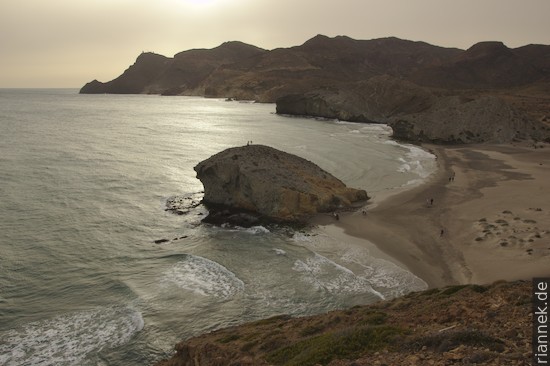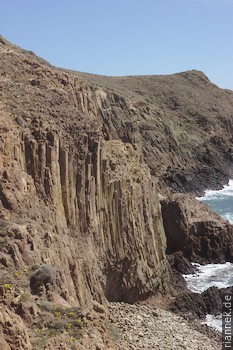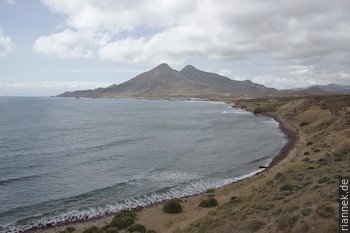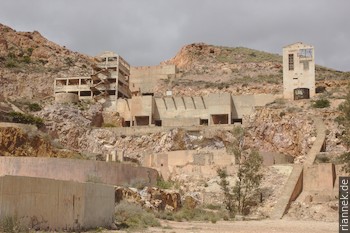
Beautiful secluded bays, volcanic rocks, empty beaches – well, the weather wasn’t exactly the best either. But as is so often the case, I like the cloudy photos even better than the blue-sky ones I took on the last day.
Cabo de Gata is a nature reserve near Almeria. The name, by the way, does not come from the Spanish word for cat, but from agate, which is found here. The volcanoes were active in several phases in the Tertiary, in a basin within the Betic Mountains (the mountains formed in the same period run like a horseshoe through Andalusia and northern Morocco, including the Sierra Nevada and the Rif Mountains). They are mainly typical volcanic rocks of subduction zones (andesite, dacite, rhyolite). The explosive volcanoes were located in the shallow sea, partly as islands, but largely underwater. There are several calderas, lava domes, tuffs (mainly ignimbrites), agglomerates (lava bombs and ash) and hyaloclastites (breccias, typical of eruptions in shallow water, strong alteration by seawater occurs, creating new minerals, especially zeolites). In some cases, coral reefs have subsequently grown on the volcanoes.

The lighthouse at Cabo de Gata proper, for example, stands on a lava dome, i.e. viscous lava that has been squeezed out of the vent. The neighbouring lava dome forms the rocks in the sea, and spectacular columns can also be seen on the coast. The columns are formed by the decrease in volume during cooling, which can often be observed with basalt in particular, but here we are dealing with andesite.

Two beautiful large lava domes are the two peaks of Los Frailes, best seen from the Mirador La Ilseta. They are located in the centre of a large caldera.

At the rim of another caldera, the hydrothermal systems of the volcanoes have created an important gold deposit. Rodalquilar is a high sulphidation epithermal deposit, what this means can best be read in my book The World of Mineral Deposits. Large scale mining was only carried out here for a decade in the 1950s, and the processing was done with the help of cyanide.

If you want to look at geology here, you should take a look at The Almeria-Nijar Basin: Geological Features (PDF). I also found Soriano et al. 2012 interesting.
Read on
The Formation of Mountains
The World of Mineral Deposits
Granada
Ronda